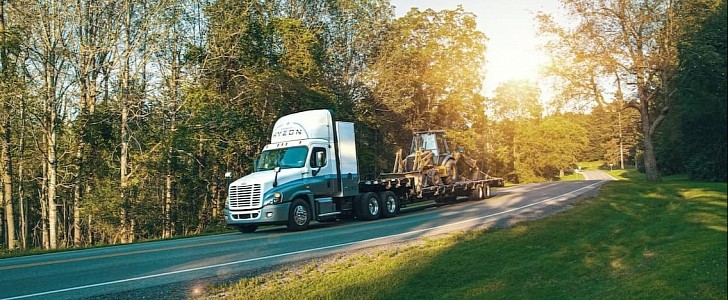New Zealand has taken an important step toward decarbonization, through a recent partnership between Hiringa Energy and New York-based Hyzon, with the purpose of developing a nationwide hydrogen refueling network, dedicated to heavy-duty fuel cell electric vehicles.
The largest heavy vehicle fleet owner in New Zealand, TR Group, will own the first Hyzon fuel cell electric trucks (FCEVs), as well as lease them to multiple logistics companies. In order to support the operation of these e-trucks throughout the country, Hiringa will build four green hydrogen refueling stations in strategic locations, linked to the main heavy freight routes in New Zealand’s North Island.
The project is starting off with four refueling stations and 20 FCEVs, with plans to add 20 more high-capacity refueling stations in the next four to five years. At the same time, the e-truck fleet is expected to grow just as fast. These initial FCEVs are 55-ton trucks that comply with the country’s regulations, and that are capable of handling some of the challenging local road conditions.
According to Hyzon, these trucks have almost the same capabilities of diesel-powered models, with a range of over 370 miles (600 km) between refueling stops.
The ultimate goal is to eliminate toxic emissions from heavy transport, with the help of hydrogen fuel cell technology. The New Zealand Government is supporting Hiringa Energy with an investment of over $12 million (NZ$16 million) and has also launched a cooperation program for hydrogen development, with Japan.
Hyzon is one of the most active supports of hydrogen fuel cell heavy-duty trucks, claiming to have developed the highest-energy fuel cell for these types of vehicles. Its proprietary technology was already used to power trucks and buses all over the world, from Europe to Australia.
The goal is to prove that clean energy heavy-duty vehicles can be just as efficient as conventional ones, in terms of power, payload, and range.
The project is starting off with four refueling stations and 20 FCEVs, with plans to add 20 more high-capacity refueling stations in the next four to five years. At the same time, the e-truck fleet is expected to grow just as fast. These initial FCEVs are 55-ton trucks that comply with the country’s regulations, and that are capable of handling some of the challenging local road conditions.
According to Hyzon, these trucks have almost the same capabilities of diesel-powered models, with a range of over 370 miles (600 km) between refueling stops.
The ultimate goal is to eliminate toxic emissions from heavy transport, with the help of hydrogen fuel cell technology. The New Zealand Government is supporting Hiringa Energy with an investment of over $12 million (NZ$16 million) and has also launched a cooperation program for hydrogen development, with Japan.
Hyzon is one of the most active supports of hydrogen fuel cell heavy-duty trucks, claiming to have developed the highest-energy fuel cell for these types of vehicles. Its proprietary technology was already used to power trucks and buses all over the world, from Europe to Australia.
The goal is to prove that clean energy heavy-duty vehicles can be just as efficient as conventional ones, in terms of power, payload, and range.






